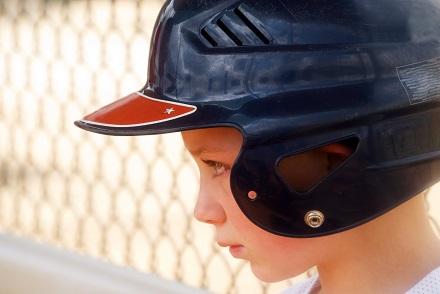

Those results offer key insights into the contemporary challenges of getting and keeping kids involved in sports, which is the theme of a new public awareness campaign called “Don’t Retire, Kid,” which launched Aug. 4.
The survey revealed that parents are under pressure, too — just like their kids — with many doling out thousands of dollars every year in tournament and travel costs.
In 2018, only 38 percent of kids between the ages of 6 and 12 played team sports on a regular basis, down from 45% in 2008, according to separate research from the Sports & Fitness Industry Association (SFIA). The National Youth Sport Survey, commissioned by The Aspen Institute through its Project Play initiative, dug deeper into the reasons why participation has declined. The focus, according to a statement from the institute, was on youth sports participation by kids up to 18 years of age at all competitive levels (recreational, club and high school).
Among the survey’s key findings:
- Travel is now the costliest feature of youth sports. On average across all sports, parents spent more annually on travel ($196 per sport per child) than equipment ($144), private lessons ($134), registration fees ($125) and camps ($81). That average includes all kids playing sports — not just those on travel teams, which often start in grade school and can cost families far more than a couple hundred dollars a year. Youth sports is now an estimated $17 billion industry, largely driven by travel teams.
- Parents believe their kids are having fun. They reported their children experience high levels of enjoyment from sports. But they also said most have at least a moderate level of stress, with field hockey and lacrosse scoring as the most stressful sports for kids. The least stressful were skiing/snowboarding, track and field, skateboarding and soccer. When asked to rate what sources their child feels pressure from in sports, parents most often pointed to coaches.
- To keep them playing, many parents are willing to spend lots of money. Parents with a child in ice hockey spent on average $2,583 per year – the most expensive sport among the 21 sports evaluated. Other costly sports included skiing/snowboarding ($2,249), field hockey ($2,125), gymnastics ($1,580) and lacrosse ($1,289). The least expensive sports were track and field ($191), flag football ($268), skateboarding ($380), cross country ($421) and basketball ($427). The average across all sports was $693. But even the least expensive sports had some parents spending in excess of $9,000 per year on one child. In six sports (baseball, gymnastics, ice hockey, skiing/snowboarding, swimming and tennis), some parents spent $12,000 or more in one year.
- Kids from lower-income homes participate less often.The Aspen Institute’s nationally representative survey, distributed by Qualtrics International, collected insights from 1,032 adults in all 50 states whose children played sports; parents whose kids did not play (or were forced to quit) were not sampled. The average household income of respondents was $90,908. That’s higher than the U.S. average of $59,039. This gap helps explain why children from low-income families are half as likely to play sports as kids from upper-incomes homes, according to separate research from SFIA.
For more details and sport-by-sport comparisons, click here.
It’s worth noting that a mere four years ago, the National Alliance for Youth Sports claimed the majority of kids quit playing youth sports at age 13 — which makes the latest survey results even more disheartening.
As part of The Aspen Institute’s “Don’t Retire, Kid” campaign, which targets parents and aims to highlight some of the issues — such as stress and rising costs associated with playing sports —that detract from the joy and fun kids should be experiencing playing sports.
The Aspen Institute also released a video PSA that debuted during ESPN’s SportsCenter that shows a young boy announcing his retirement from sports at a crowded press conference. His final words: “I said I’d play this game as long as I was having fun, and now it’s time to call it quits. Any questions?”
“We need to figure out why [young athletes] discontinue, not just that they do,” Travis Dorsch, a Utah State associate professor and founding director of the Families in Sport Lab who designed the survey, said in a statement. “For kids, two years in a sport may seem like forever, while we as adults think they should continue for much longer. We need to frame it through the interpretive lens of adolescence. … For the parent who’s putting down $10,000 for their kid to play soccer, they see it as giving their kid every opportunity. But the kid may feel, ‘Oh my gosh, they’re putting down $10,000 and now I feel pressure to perform.’”
So what is it that event owners can do to make things better? If kids aren't finding sports fun, how about working to add a dose of enjoyment to tournaments? Breaking up tournaments with fun activities, including trips to water parks and group events to attractions.
If that isn't a possibility, think about building fun into the event itself. Minor League Baseball, for example, is famous for its promotions, themed events and more, which keep drawing in families. (The Make Marinara Legal Night promo and the World's Largest Silly String Fight in the Infield come to mind, although there are many others.) Keeping tournaments fun means keeping kids from looking at them as drudgery -- which may be what is happening here, particularly if the culture is so success-oriented.
Some tournament directors are moving toward pool play formats, rather than single-elimination, giving kids the chance to have a better and more fulfilling tournament experience. Another win could be allowing kids to participate in skill clinics by players on local pro teams. Still another is changing it up and letting kids sample different sports, such as drone racing, Ultimate or beach volleyball -- whatever is available. The added value of these attractions can even help parents' ability to spend money on the sport.

